| Home | About BFIS | Species List | Risk Analysis | Harmonia⁺ | Resources | Outputs | Mailing List | Registry |
| Contact us | Login | | ||||||
 |
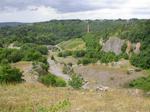
©
Etienne Branquart
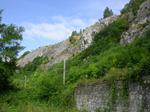
©
Etienne Branquart
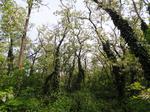
©
Franz Essl
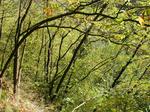
©
Etienne Branquart

©
Etienne Branquart
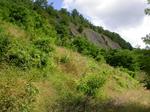
©
Etienne Branquart
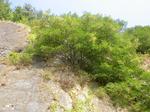
©
Etienne Branquart

©
Etienne Branquart
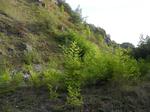
©
Rudi Vanherck
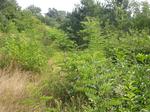
©
Etienne Branquart

©
Etienne Branquart
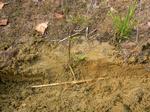
©
Etienne Branquart
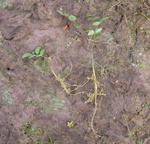
©
Etienne Branquart
 Naturalization in Belgium Naturalization in Belgium
 Invasiveness Invasiveness
More on invasiveness: R. pseudoacacia is an early successional plant, preferring full sun, well drained soils, and little competition. It reproduces both from seed and by sprouting from the roots or stump; sprouting is considered more common than sexual reproduction. Limited seed dispersal, seed coat impermeability, and high light requirements for germination all limit reproduction by seed. It is commonly found in disturbed areas such as fallow lands and roadsides but is also reported to invade occupationally dry grasslands and forests dominated by light-demanding tree species (oak, pine, etc.) in Belgium. Although this tree produces abundant seeds, germination rate is often low in our climatic conditions. The area potentially invaded by R. pseudacacia is likely to increase considerably under a
warmer climate.
 Distribution in Belgium Distribution in Belgium
Established populations

Endangered areas

 Impacts on Species Impacts on Species
 Impacts on Ecosystems Impacts on Ecosystems
More on impacts: Once introduced, the black locust expands readily by root suckering and stump sprouting and forms dense clones creating shaded islands from which most native plants are outcompeted. It also modifies soil properties and favours the development of a nitrogen-demanding vegetation. The large, fragrant blossoms of R. pseudoacacia are sometimes reported to compete with native plants for pollinating bees.
References:
AEF (2006)
Cartes provisoires de la distribution de néophytes en Wallonie.
Unpublished document.
Benesperi, R., Giuliani, C., Zanetti, S., Gennai, M., Lipppi, M.M., Guidi, T., Nascimbene, J. & Foggi, B. (2012)
Biodiversity and Conservation 21:3555–3568.
Boring, L.R. & Swank, W.T. (1984)
The role of black locust (Robinia pseudo-acacia) in forest succession.
Journal of Ecology 72(3): 749-766.
Boring, L.R. & Swank, W.T. (1984)
Symbiotic nitrogen fixation in regenerating black locust stands.
Forest Science 30(2): 528-537.
Boring, L.R., Swank, W.T., Waide, J.B. & Henderson, G.S. (1988)
Biogeochemistry 6: 119-159.
Call, L.J. & Nielsen, E.T. (2003)
Analysis of Spatial Patterns and Spatial Association between the Invasive Tree-of-Heaven (Ailanthus altissima) and the Native Black Locust (Robinia pseudoacacia).
The American Midland Naturalist 150(1):1-14.
Callaway, R.M., Bedmar, E.J., Reinhart, K.O., Silvan, C.G. & Klironomos, J. (2011)
Effect of soil biota from different ranges on Robinia invasion: acquiring mutualists and escaping pathogens.
 Ecology 92(5): 1027-1035.
Cierjacks, A., Kowarik, I., Joshi, J., Hempel, S., Ristow, M., von der Lippe, M. & Weber, E. (2013)
Journal of Ecology 101: 1623–1640.
Dzwonko, Z. & Loster, S. (1997)
Effects of dominant trees and ahtropogenic disturbances on species richness and florisitic composition of secondary communities in Southern Poland.
J. Appl. Ecology 34: 861-870.
Essl, F. & Rabitsch, W. (2003)
Neobiota in Osterreich.
Umweltbundesamt, 432 pp.
Keil, P. & Loos G.H. (2005)
Preliminary account of ergasiophygophytic and xenophytic trees, shrubs and subshrubs in the Central Ruhrgebiet (Germany).
 Electronic Publications of the Biological Station of Western Ruhrgebiet 3: 1-12.
Kleinbauer, I., Dullinger, S., Peterseil, J. & Essl, F. (2010)
Climate change might drive the invasive tree Robinia pseudacacia into nature reserves and endangered habitats.
Biological Conservation 143: 382-390.
Kowarik, I. (1990)
Zur Einführung und Ausbreitung der Robinie (Robinia pseudoacacia L.) in Brandenburg und zur Gehölzsukzession ruderaler Robinienbestände in Berlin.
Verh. Berl. Bot. Ver. 8: 33-67.
Kowarik, I. (1996)
Funktionen klonalen Wachstums von Bäumen bei der Brachflächen-Sukzession unter besonderer Berücksichtigung von Robinia pseudacacia.
Verhandlungen der Gesellschaft für Ökologie 26: 173–181.
Krivanek, M. & Pysek, P. (2006)
Predicting invasions by woody species in a temperate zone: a test of three risk assessment schemes in Czech Republic.
Diversity and Distributions 12: 319-327.
Lambinon, J., Delvosalle, L. & Duvigneaud, J. (2004)
Nouvelle fore de la Belgique, du Grand-Duché de Luxembourg, du Nord de la France et des régions voisines.
Editions du Patrimoine du Jardin botanique national de Belgique, Meise.
Lee, C.S., Cho, H.J. & Yi, H. (2003)
Stand dynamics of introduced black locust (Robinia pseudoacacia L.) plantation under different disturbance regimes in Korea.
Forest Ecology and Management 189: 281–293.
Muller, S. (2004)
Plantes invasives en France : état des connaissances et propositions d'actions.
Publication scientifique du Museum d'Histoire naturelle, Patrimoines naturels n°62.
Nascimbene, J., Nimis, P.N. & Benesperi, R. (2012)
Mature non-native black-locust (Robinia pseudoacacia L.) forest does not regain the
lichen diversity of the natural forest.
Science of the Total Environment 421–422: 197–202.
Nasir,H., Iqbal, Z., Hiradate, S. & Fujii, Y. (2005)
Journal of Chemical Ecology September 31(9): 2179-2192.
Rice, K.S., Westerman, B. & Federici, R. (2004)
Impacts of the exotic, nitrogen-fixing black locust (Robinia pseudacacia) on nitrogen-cycling in a pine–oak ecosystem.
Plant Ecology 174: 94–107.
Sabo, A.E. (2000)
Restoration and Reclamation Review 6: 244-251.
Starfinger, U. & Kowarik, I. (2007)
From online Neoflora database, Invasive gebietsfremde Pflanzen in Deutschland (Floraweb).
Stone, K.R. (2009)
In: Fire Effects Information System, [Online]. U.S. Department of Agriculture, Forest Service, Rocky Mountain Research Station, Fire Sciences Laboratory (Producer).
Sutherland, E.K., Hale, B.J. & Hix, D.M. (2010)
Plant Ecology. 147: 1-19.
Van Landuyt, W., Hoste, I., Vanhecke, L., Van den Bremt, P. Vercruysse, W. & De Beer, D. (2006)
Atlas van de Flora van Vlaanderen en het Brussels gewest.
Nationale Plantentuin en het Instituut voor Natuur- en Bosonderzoek i.s.m. Flo.Wer vzw.
Verloove, F. (2006)
Scripta Botanica Belgica 39, 89 pp.
Weber, E. & Gut, D. (2004)
Assessing the risk of potentially invasive plant
species in central Europe.
Journal for Nature Conservation12: 171-179.
|
 |
 |






